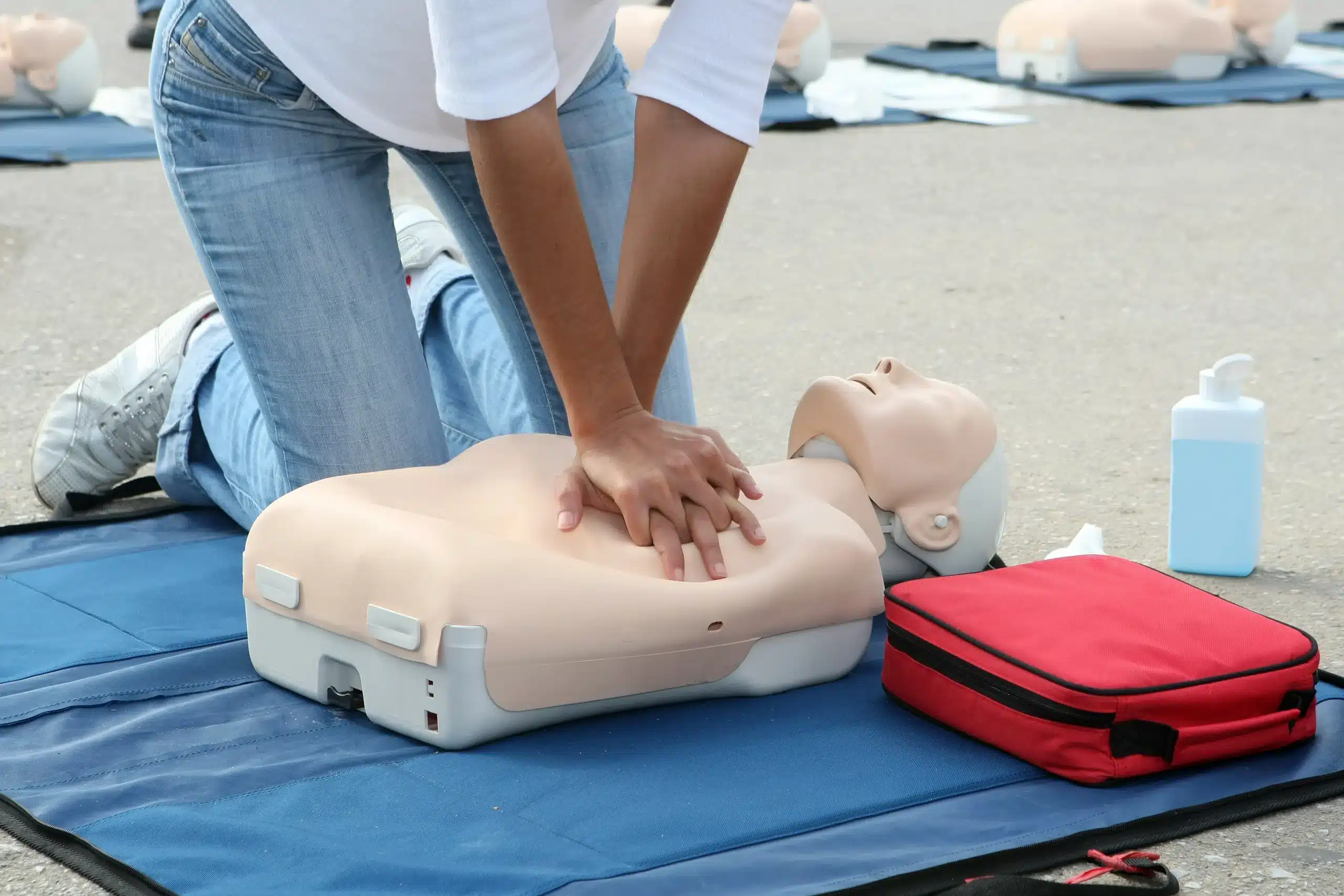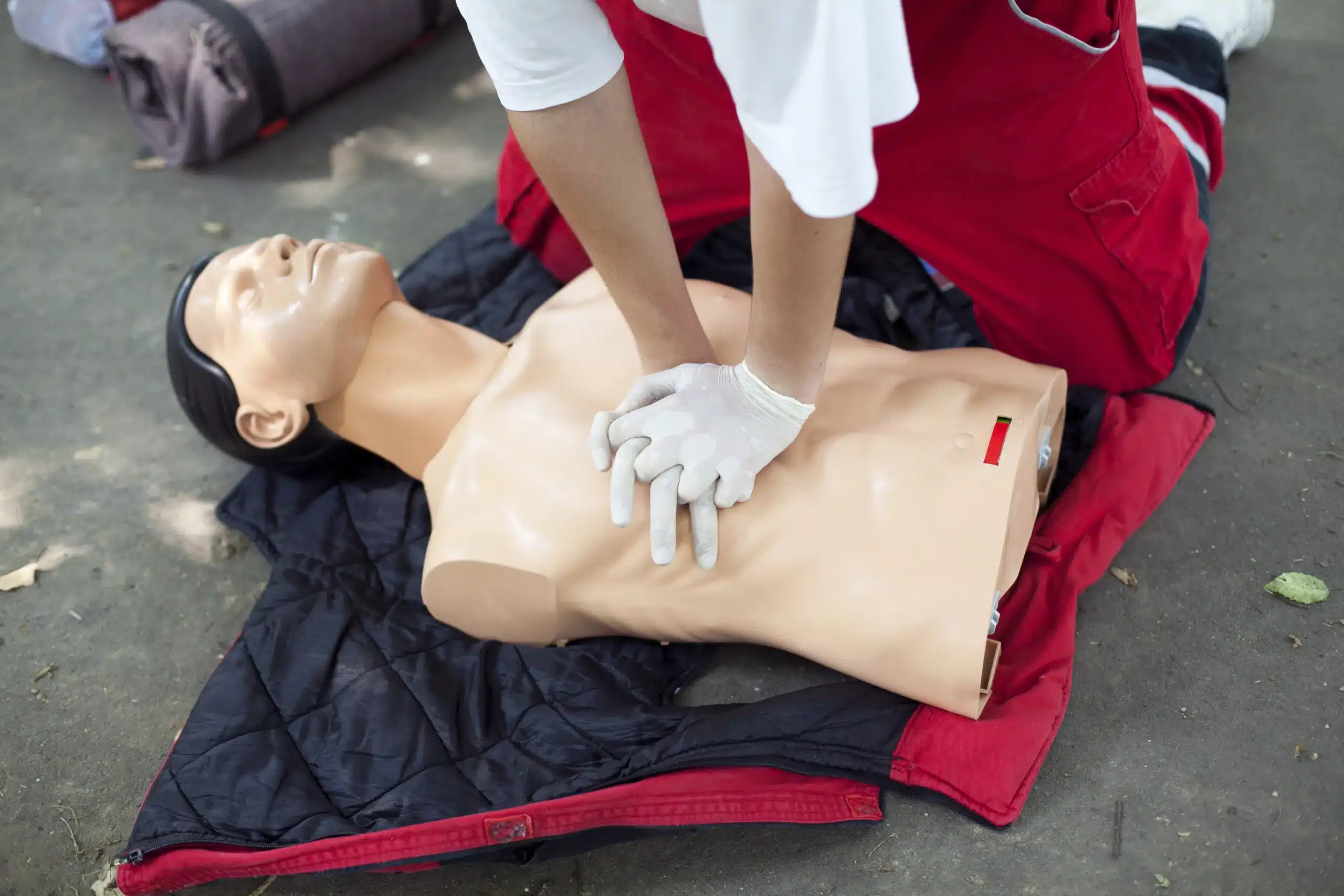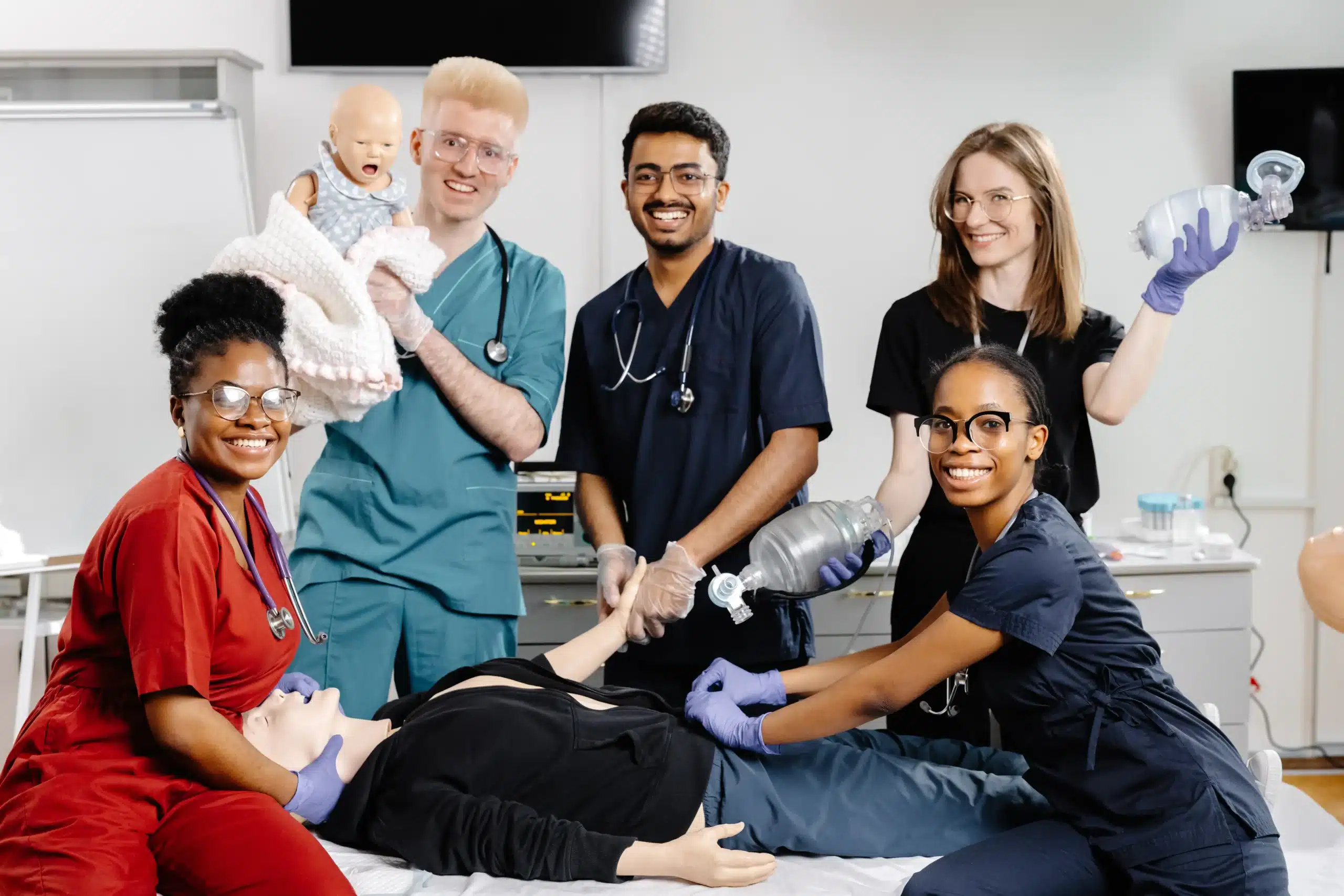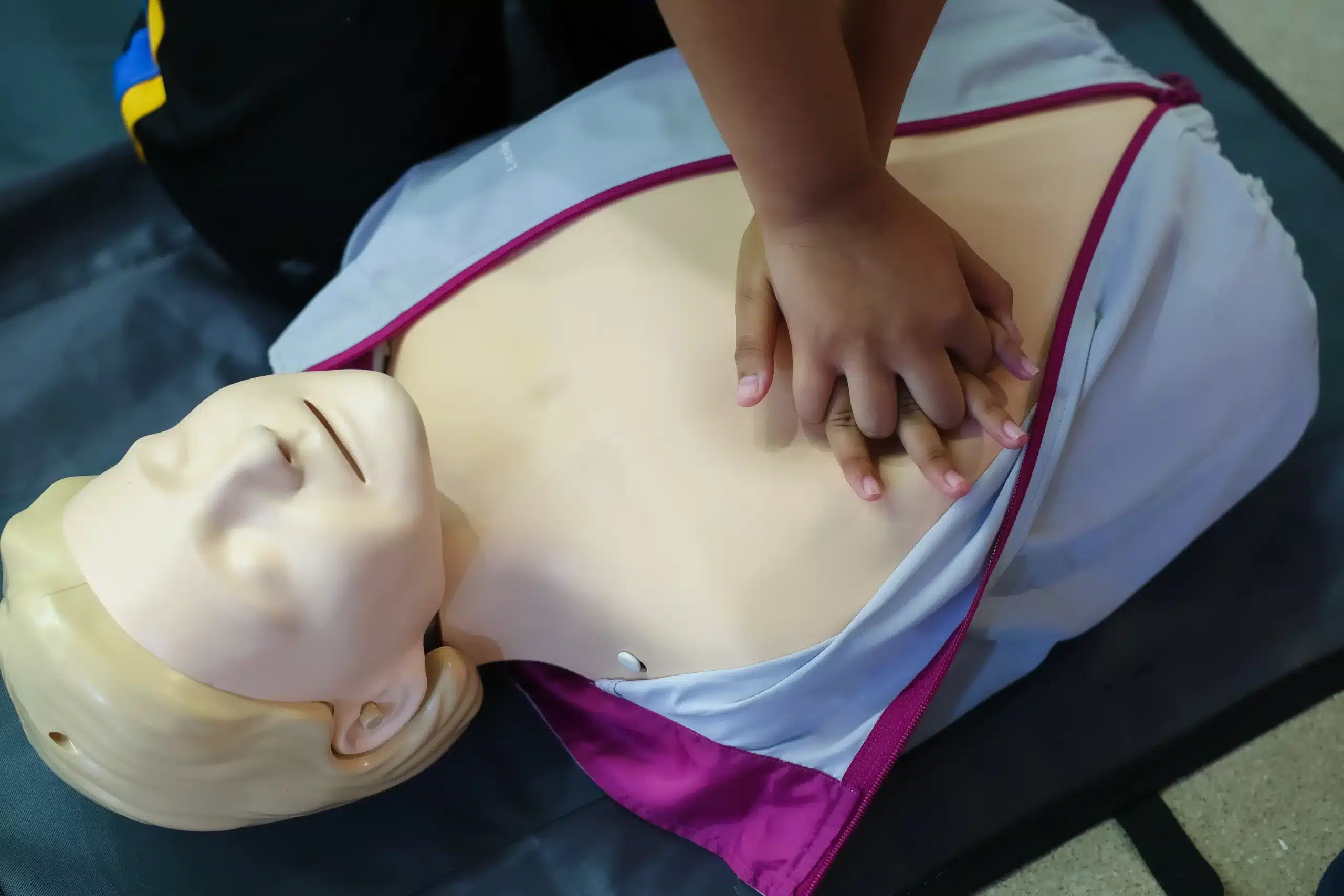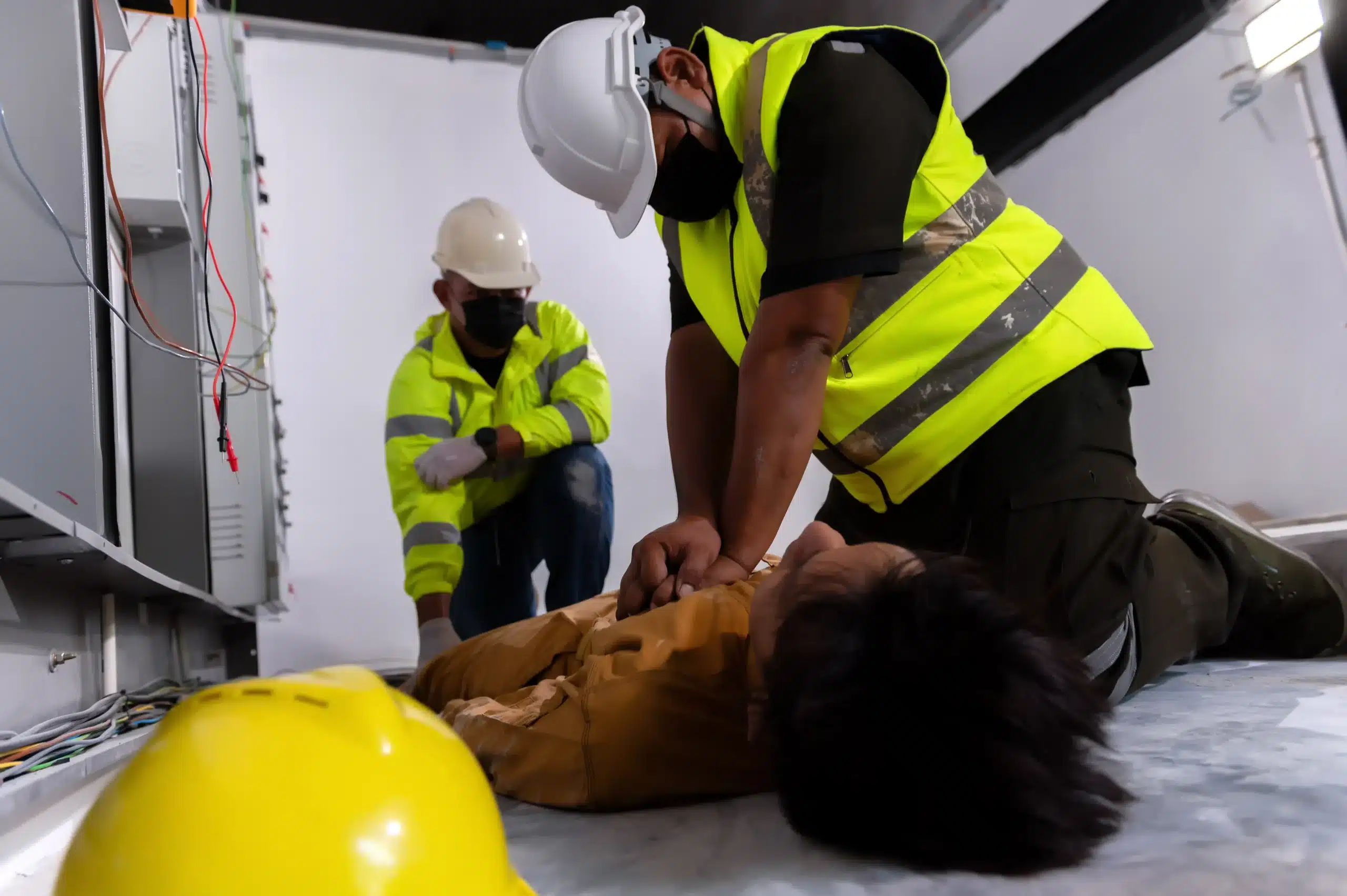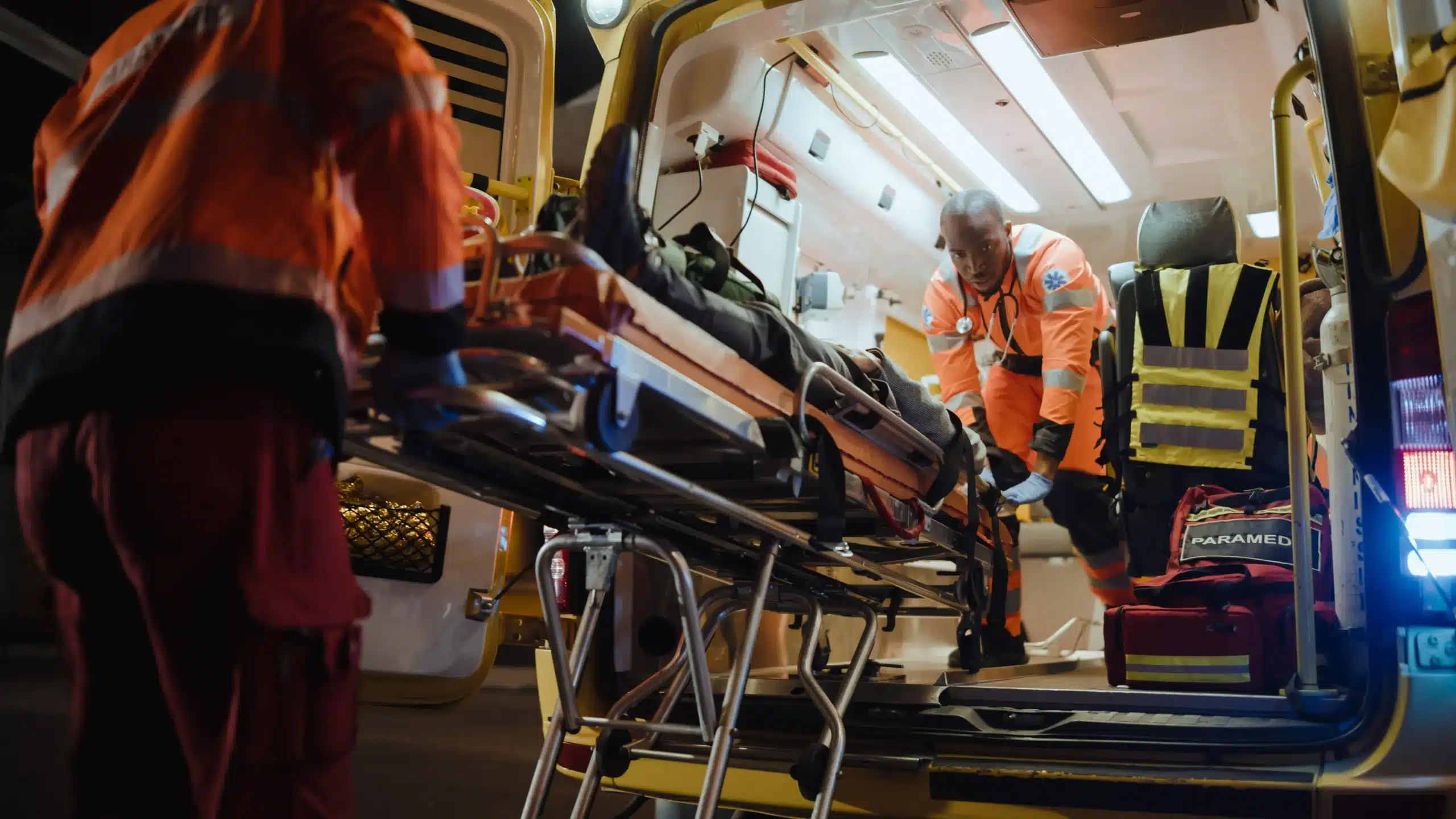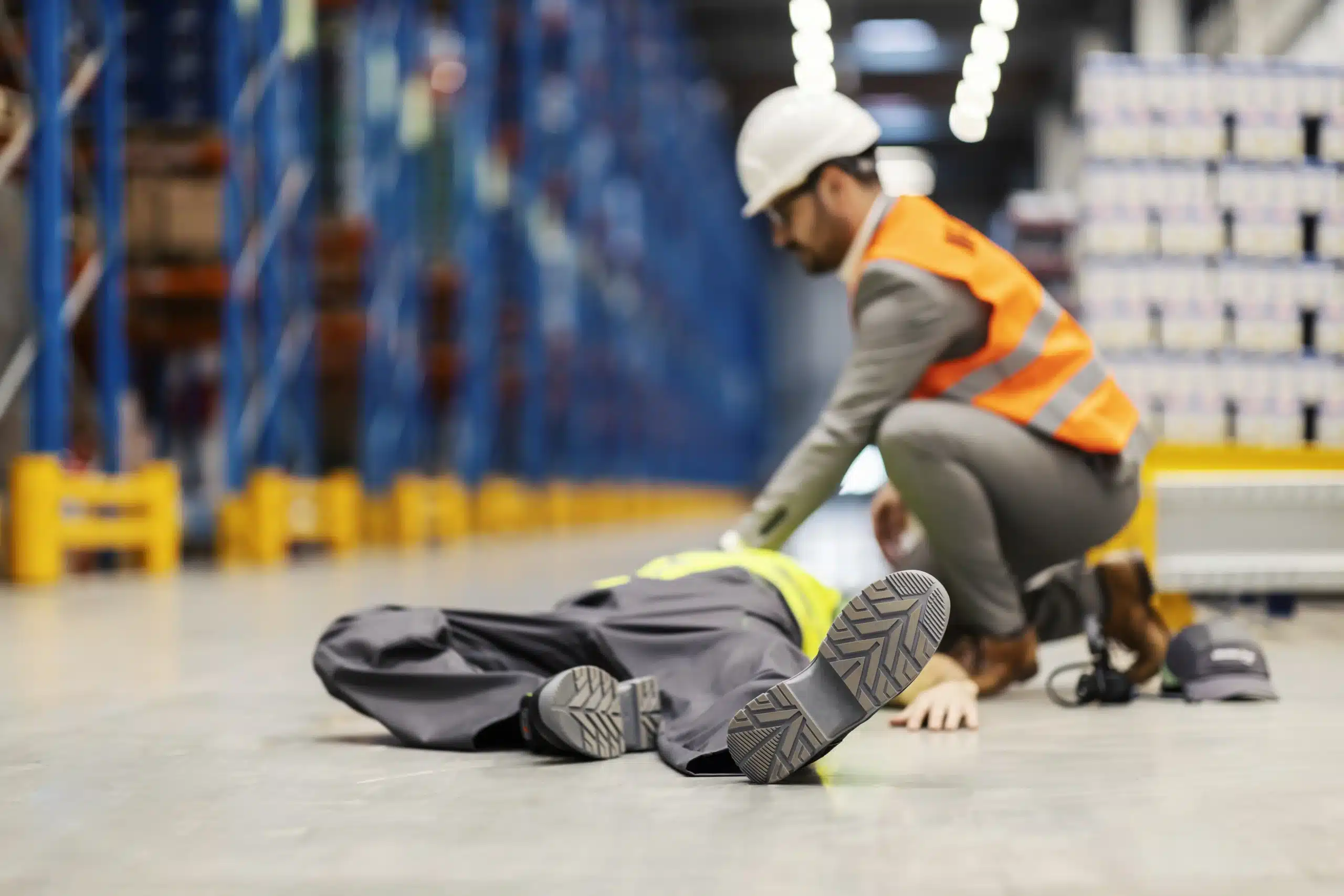Emergencies can happen anytime, anywhere. Would you know what to do if someone near you experienced a medical crisis? BLS certification gives you the confidence and skills to respond effectively in such situations. This post is your guide to understanding BLS, including what it is, why it’s important, and how to find the right training for you. We’ll cover everything from course content and different learning formats to finding “BLS classes near me” and choosing a reputable provider. Let’s equip you with the knowledge and skills that can make a real difference.
Key Takeaways
- BLS certification equips you to handle medical emergencies: Whether you’re a healthcare professional or not, these skills can make a difference. Explore different course formats to find what works best for you.
- Select a reputable BLS provider for quality training: Prioritize accreditation, experienced instructors, and hands-on practice opportunities. Inquire about potential cost savings through discounts or group rates.
- Maintain your BLS skills through regular renewal and continuing education: Stay up-to-date with the latest guidelines and refresh your knowledge every two years to ensure you’re prepared for any situation.
What are BLS Classes & Why are they Important?
BLS classes teach the skills needed to respond to life-threatening medical emergencies. These courses cover essential techniques like CPR, recognizing the signs of a heart attack or stroke, and using an AED. Understanding the importance of BLS and knowing who needs it can help you make informed decisions about your training.
What is BLS?
Basic Life Support (BLS) focuses on providing immediate care during emergencies like cardiac arrest and respiratory distress. It involves a combination of techniques, including chest compressions, rescue breaths, and recognizing when someone needs help. These skills can stabilize a person until professional medical help arrives. Think of BLS as the first line of defense in a medical crisis, bridging the gap between the onset of an emergency and the arrival of paramedics. This immediate care can potentially save lives. You can find more information on our BLS/CPR page.
Who Needs BLS Certification?
While healthcare providers, like doctors and nurses, need BLS certification, it’s not limited to them. Anyone who might encounter a medical emergency can benefit from this training. Think childcare providers, teachers, coaches, and even parents. Having BLS skills means you’re prepared to act quickly and confidently in a crisis, whether at work, at home, or out in the community. If you’re considering a career in healthcare, BLS certification is often a prerequisite. Research shows that BLS training is crucial for medical and PA students entering the healthcare field.
Common BLS Misconceptions
One common misconception is that BLS is only for medical professionals. This isn’t true; anyone can learn and benefit from these life-saving skills. Another misconception is that once you’re certified, you’re good to go forever. Unfortunately, skills can diminish over time without regular practice. Refresher courses and staying up-to-date on the latest guidelines are essential to maintain proficiency. Don’t let these misconceptions prevent you from getting trained. Check out our low price guarantee and contact us with any questions. We offer various courses, including BLS courses in Visalia, to fit your needs.
Find BLS Classes Near You
Finding the right BLS class shouldn’t feel like searching for a needle in a haystack. Here’s how to find BLS classes near you:
Use Online Search Tools
Online search engines are your best friend when starting your search. A quick search for “BLS classes near me” or “BLS certification [your city]” will often turn up several options. You can also use websites that focus on healthcare training and certifications. These sites often let you filter by location, schedule, and other criteria, making it easier to find a class that fits your needs. Many online directories exist to connect students with BLS courses. These tools are incredibly helpful for comparing programs.
Check Local Facilities
Hospitals, community centers, and educational institutions frequently offer BLS training. Reach out to these facilities directly to ask about upcoming courses and schedules. Your local fire department or emergency medical services (EMS) agency may also offer BLS classes or be able to point you in the right direction. For those in the Visalia, Tulare, and Delano areas, Safety Training Seminars offers a range of courses, including BLS certification.
Contact Professional Organizations
Professional organizations related to healthcare often maintain lists of approved or accredited training providers. Contacting these organizations can help you find high-quality BLS classes that meet industry standards. For example, the American Heart Association and the American Red Cross are excellent resources for finding certified instructors and courses. These organizations can also offer information on continuing education and recertification.
Choose the Right BLS Class Format
Finding the right BLS class format depends on your learning style, schedule, and preferences. Here’s a breakdown of the most common options:
In-Person BLS Classes
In-person BLS classes offer hands-on learning guided by a certified instructor. This format is ideal for those who thrive in interactive environments and value direct feedback. Studies show that in-person training, with its emphasis on real-time correction and practice, can significantly improve skill acquisition and retention. This is especially important for BLS, where proper technique can be life-saving. Instructors can demonstrate techniques, answer questions immediately, and provide personalized guidance. Our in-person BLS courses in Visalia offer this crucial hands-on training.
Online BLS Classes
Online BLS classes offer flexibility, allowing you to learn at your own pace and on your own schedule. They’re a great option if you’re juggling a busy life or have limited access to in-person training. Online courses typically cover the same core material as in-person classes, including CPR techniques, AED use, and how to recognize the signs of a heart attack or stroke. While online learning is a convenient way to acquire foundational knowledge, research suggests that traditional in-person training often leads to better long-term skill retention. Consider supplementing your online learning with hands-on practice.
Blended Learning BLS Classes
Blended learning combines online convenience with the hands-on practice of in-person instruction. This format typically involves completing online modules covering BLS theory, followed by an in-person skills session to practice and demonstrate proficiency. Blended learning can be highly effective, particularly for those who prefer a structured learning environment and appreciate the opportunity to ask questions and receive instructor feedback. This format also allows for more personalized learning, as students can focus on areas where they need additional practice. If you’re looking for a balance of flexibility and hands-on training, blended learning might be the perfect fit. Check out our RQI classes for an example of this approach.
What Happens in a BLS Class?
Taking a BLS class is a rewarding experience. You’ll gain essential skills and knowledge to help in medical emergencies. Here’s a breakdown of what you can expect:
Course Content & Skills
BLS classes cover a range of life-saving techniques. You’ll learn how to perform high-quality CPR for adults, children, and infants, including how to use an AED, relieve choking, and provide rescue breaths. Studies show that BLS training significantly improves skills and knowledge related to these practices. You’ll practice these skills in a safe and controlled environment, building your confidence and competence. A good BLS course also emphasizes teamwork and communication, vital in emergency situations. You’ll learn how to effectively coordinate with others to provide the best possible care.
Class Length & Structure
BLS classes are designed to be efficient and comprehensive. Most courses can be completed in a single day. The structure typically involves a combination of lectures, demonstrations, and hands-on practice. This integrated approach helps solidify your understanding and build muscle memory for essential skills. Expect interactive sessions where you can ask questions and get personalized feedback from your instructor. This ensures you grasp the concepts and techniques thoroughly.
Certification & Exam
Upon completion of the course, you’ll receive a BLS certification, typically valid for two years. Most BLS courses include a written exam and a practical skills test. The exam assesses your understanding of the course material, while the skills test evaluates your ability to perform the techniques correctly. Studies00716-7/pdf) have shown that objective feedback during these evaluations is crucial for improving performance. The instructors are there to support you and ensure you’re well-prepared for both the exam and real-world scenarios. They’ll provide guidance and answer any questions you may have. With the right preparation, you’ll be confident in your ability to provide effective BLS in any situation.
Choose a Reputable BLS Provider
Finding the right BLS class involves more than just convenient dates and times. You also want a high-quality training experience that prepares you for real-life emergencies. Here’s what to look for in a reputable BLS provider:
Accreditation & Certification
First things first, confirm the course is accredited and certified by a recognized organization like the American Heart Association (AHA). Many employers require AHA-approved BLS certification, so double-check the course description. This accreditation not only validates the quality of the training, but also ensures the curriculum meets industry standards, and means your certification will be widely accepted. For example, Safety Training Seminars offers a low price guarantee for their AHA-approved BLS courses in Visalia.
Instructor Qualifications
Experienced, certified instructors can make all the difference in your learning. Look for instructors with real-world healthcare or emergency response experience. Their practical insights and guidance can make the training more engaging and relevant. A good instructor will answer your questions thoroughly and provide personalized feedback to help you master the skills. Contact us to learn more about our instructors’ qualifications and experience.
Class Size & Equipment
Hands-on practice is crucial for developing the muscle memory you’ll need in an emergency. Ask about class size and equipment availability. Smaller classes often mean more individual attention from the instructor and better access to training equipment like manikins and AED trainers. In-person training is essential for practicing CPR and using an AED effectively. Check out our BLS courses in Visalia to find a class that fits your needs. Our RQI classes also offer hands-on training and skills evaluation. You can learn more about our RQI classes on our website.
How Much Do BLS Classes Cost?
Knowing the price range for BLS classes helps you budget and find the best value. Let’s break down the costs involved.
Average BLS Certification Costs
Typically, BLS certification costs between $20 and $60 for basic courses. More comprehensive training, like courses that include first aid, might land in the $40 to $60 range. These prices are pretty standard for healthcare providers, though you might need to factor in another $20 to $30 for course materials. Remember, these are averages, so prices can vary depending on your location and the training provider. Safety Training Seminars offers a Low Price Guarantee to ensure you’re getting the best possible deal in Visalia, Tulare, and Delano, CA. Check our BLS Courses in Visalia for more details.
Factors Affecting Cost
Several factors can influence the cost of a BLS class. One of the biggest is the class format. Online BLS courses are often more budget-friendly than in-person classes. The reputation of the organization providing the training matters too. Established organizations like the American Heart Association (AHA) might have slightly higher prices because of their recognized training standards and comprehensive programs. Also, the inclusion of extra materials or certifications can affect the overall cost.
Discounts & Group Rates
If you’re training a team or looking to save money, ask about discounts. Many providers offer group rates or discounts if you sign up for multiple classes. Some places offer a combo price for BLS and first aid certification. Private group classes might also be discounted, a great option for workplaces training multiple employees. Contact Safety Training Seminars to learn more about potential discounts and group rates for your team.
Prepare for Your BLS Class
Getting ready for your BLS class involves more than just signing up. A little preparation beforehand can make a big difference in how much you get out of the course. Here’s how to get ready:
Required Materials & Pre-Coursework
Some BLS classes require pre-coursework, often an online component you’ll complete before your in-person skills session. This usually involves reading materials and quizzes covering essential BLS concepts and procedures. Check with your chosen provider, like Safety Training Seminars, to see if your class has a pre-coursework requirement. Completing this work ahead of time lets you focus on hands-on skills practice during the in-person session. You’ll likely need a BLS provider manual for your course. Sometimes this is included in the course fee; other times, you may need to purchase it separately. Again, confirm with your provider about the manual and any other required materials.
What to Bring to Class
Come prepared with a few essentials to make the most of your BLS class. A notebook and pen are helpful for jotting down key points and reminders. Comfortable clothing is a must since you’ll be practicing skills like CPR and using an AED. Bring your BLS provider manual if required, and a water bottle to stay hydrated throughout the day. Having these items on hand will help you stay focused and comfortable during your training.
Mental & Physical Prep
BLS training involves both mental focus and physical activity. Reviewing the BLS guidelines before class can refresh your knowledge and give you a head start. You can find these guidelines on the American Heart Association website. Getting a good night’s sleep before class will help you stay alert and engaged. Knowing what to expect can ease any pre-class jitters, so feel free to contact us with any questions. We’re here to help you feel confident and prepared for your BLS training.
Renew Your BLS Certification
Keeping your BLS certification current is essential for any healthcare professional. It ensures you’re up-to-date on the latest life-saving techniques and best practices. Here’s what you need to know about renewing your BLS certification:
Renewal Requirements
BLS certification is typically valid for two years. Check with your certifying organization, such as the American Heart Association or the American Red Cross, for their specific renewal guidelines. Recertification courses are shorter than initial certification courses and focus on refreshing your skills and knowledge. Some organizations allow a grace period for renewal, often within 30 days of expiration, so it’s always best to plan and renew before your certification lapses. You can find BLS renewal courses available through Safety Training Seminars.
Continuing Education
The value of BLS training goes beyond initial certification. Continuing education and regular practice are crucial for maintaining proficiency in these life-saving skills. Studies have shown that ongoing BLS training significantly improves healthcare providers’ knowledge, practical skills, and confidence in emergency situations. This continuous learning helps reinforce best practices and ensures you can respond effectively under pressure. Safety Training Seminars offers a variety of courses to help you stay current.
Stay Updated on Guidelines
Emergency care guidelines are constantly evolving as medical research advances. Staying updated on the latest guidelines from organizations like the American Heart Association is vital for providing the most effective care. These updates often incorporate new techniques and best practices based on the latest scientific evidence. Regularly reviewing these guidelines ensures your skills align with current recommendations and helps you deliver the highest quality of care. You can contact us with any questions.
Benefits of Local BLS Classes
Local BLS classes offer distinct advantages, especially for those who value hands-on learning and community connection. Beyond the core curriculum, local courses provide a supportive environment that fosters skill development and networking opportunities.
Hands-on Experience & Expert Feedback
One of the most significant benefits of local BLS classes is the opportunity for hands-on learning. Studies consistently show that practical training, combined with expert feedback, is crucial for developing and retaining essential BLS skills. In a local class, you’ll practice techniques like CPR and using an AED in a controlled setting. You’ll receive immediate feedback from certified instructors, allowing you to correct mistakes and build confidence. This direct interaction translates to improved performance in real-life emergencies. Plus, having an instructor present allows you to ask questions and clarify anything you’re unsure about.
Networking
Local BLS classes often bring together people from diverse professional backgrounds, creating valuable networking opportunities. You might meet healthcare professionals, first responders, or community members interested in health and safety. These connections can be beneficial for career advancement, sharing best practices, and building a support system. Local classes foster a sense of community, making learning more engaging and enjoyable. Developing these professional connections can be especially helpful for those new to the healthcare field or those wanting to expand their network.
Local Resources & Support
Local classes provide access to community resources and support systems that extend beyond the classroom. Your instructor can connect you with local organizations offering continuing education, refresher courses, and updated guidelines. This local connection ensures you stay informed about best practices and maintain your skills. Access to local support00716-7/pdf) can also be invaluable for finding volunteer opportunities or connecting with potential employers. This ongoing support is essential for maintaining competence and confidence in your BLS skills.
Top BLS Training Providers
Finding the right BLS training provider is crucial for receiving high-quality instruction and a recognized certification. Several respected organizations offer BLS courses, each with its own approach and benefits. Here’s a closer look at some of the leading providers:
American Heart Association (AHA)
The American Heart Association is a well-known authority on BLS training, emphasizing hands-on practice and real-world application. Their courses blend online learning with in-person skills sessions, ensuring you develop the confidence to respond effectively in emergencies. AHA certification is widely accepted and respected in the healthcare field. While convenient online components are part of the process, remember that a completely online path to AHA BLS certification isn’t available—an in-person skills assessment is always required. You can find more information about the online portion of the AHA BLS course on AllNurses.com.
American Red Cross
The American Red Cross offers various BLS training options, including online, in-person, and blended formats. This flexibility lets you choose the learning style that best suits your needs. Known for their comprehensive approach, Red Cross BLS courses equip you with the knowledge and skills to handle various emergency situations.
National Safety Council (NSC)
The National Safety Council provides a range of safety and health training programs, including BLS certification. Their courses cater to diverse audiences, from healthcare professionals to everyday people wanting to learn essential lifesaving skills. The NSC focuses on practical training and the knowledge needed for effective emergency response.
American Safety & Health Institute (ASHI)
The American Safety & Health Institute offers BLS training designed for both healthcare providers and the general public. ASHI emphasizes hands-on learning and practical application, building your confidence and competence in responding to emergencies. Their courses are recognized for their quality and focus on real-world scenarios.
Safety Training Seminars
Safety Training Seminars offers comprehensive BLS training that combines theoretical knowledge with practical skills development. Our courses prepare you for various emergency situations, giving you the confidence to act quickly and effectively. The emphasis on hands-on training makes our programs especially valuable for those looking to strengthen their emergency response skills. If you’re in the Visalia, Tulare, or Delano area, consider checking our BLS courses in Visalia. We’re committed to providing excellent customer service and the lowest prices in Tulare County. Contact us today to learn more.
Related Articles
- BLS Certification in Walnut Creek: Your Guide – Visalia CPR Classes
- BLS Certification in Concord: The Complete Guide – Visalia CPR Classes
- BLS Courses in Delano: Top Providers & Certification – Visalia CPR Classes
- BLS Courses in Tulare: Your Guide to Certification – Visalia CPR Classes
- BLS Classes in Delano: Your Complete Guide – Visalia CPR Classes
Frequently Asked Questions
What’s the difference between BLS and CPR?
CPR (Cardiopulmonary Resuscitation) is a specific technique used within BLS (Basic Life Support). BLS encompasses a broader range of skills, including CPR, recognizing the signs of a medical emergency, using an AED, and providing basic airway management. Think of it this way: CPR is one tool in the BLS toolkit.
How long is a BLS certification valid?
BLS certifications are typically valid for two years. It’s essential to renew your certification before it expires to maintain your skills and ensure you’re up-to-date on the latest guidelines.
Do I have to take an in-person class to get BLS certified?
While online BLS courses offer a convenient way to learn the material, most certifying organizations, like the American Heart Association, require an in-person skills assessment to receive certification. This hands-on component ensures you can perform the techniques correctly.
What if I don’t work in healthcare? Do I still need BLS training?
Absolutely! BLS skills are valuable for anyone, regardless of their profession. Knowing how to respond to a medical emergency can make a difference in any setting, from the workplace to your own home.
How can I find BLS classes near me?
Use online search engines, check with local hospitals and community centers, or contact professional organizations like the American Heart Association or the American Red Cross for recommendations. You can also find BLS courses offered by Safety Training Seminars in Visalia, Tulare, and Delano, CA.
